|
Letter from the Editor
Summertime must be here because I have been waking up worried that I am late for work, the sun has started to get up before my alarm goes off! These extra daylight hours, fully leafed out tree canopies, and bright warm weather has me excited for days spent stretched out in a hammock, with good friends at the river, and outside looking at trees! It also makes me worried about the health of our trees and communities with the expected hot and dry days ahead. So, in this summer issue I thought I would talk about:
- Updates from our Program
- Trees, Heat Equity and Human Health
- Summer Tree Care Tips
- Community Highlights
- OCT Corner
- Upcoming Events
|
|
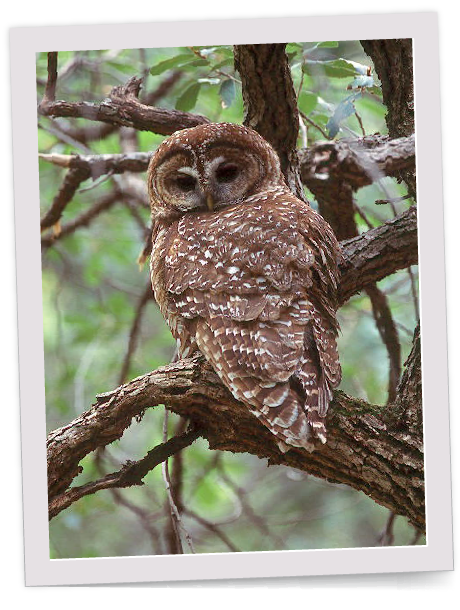 |
I hope you all get to see some spectacular leaves and share some time outside building community and soaking up some sunshine.
Stay Cool & Safe Out There, Brittany
|
|
Staff Introductions
You may have seen some new faces in the Urban and Community Assistance program, I would like to introduce you to two of our new team members recently hired on as EAB support specialists!
|
|
EVAN ELDERBROCK
Evan Elderbrock grew up in Madison, Wisconsin and developed a fascination with nature while canoeing the quiet waters of Minnesota and Ontario. After earning a Bachelor’s degree in Geology from Macalester College in St. Paul, Minn, Evan worked briefly for the Minnesota Geological Survey and then spent four years as a field ecology instructor in Maine and California. He moved to Eugene in 2016 to pursue a master’s degree in Environment Studies from the University of Oregon (UO), developing research to assess stakeholders’ ecosystem service priorities and identify pathways to increase the delivery of ecosystem services at the neighborhood scale.
|
|
Evan recently completed his PhD in Landscape Architecture at UO, where he investigated relationships between urban green space access, physical activity, mental well-being, and environmental health equity. Evan lives in Eugene with his wife, Lucy, and enjoys running, playing soccer, and gardening. Evan is thrilled to join the Urban and Community Forestry team at ODF and looks forward to helping with the EAB response, in addition to promoting equity and inclusion in urban forest management and planning! Welcome Evan! |
|
TYLER ROTH
Tyler Roth has been an ISA Certified Arborist since 2012 and ran his own residential tree service in Hood River Oregon for 9 years. Most recently he was an arborist for the City of Redmond in central Oregon before joining ODF. He has a Bachelor’s degree in Horticulture from Oregon State University and an Associate’s degree in Natural Resources from Mt Hood Community College. In 2015 he received a certificate from the Community Tree Management Institute. He has also served on the board of directors for Oregon Community Trees since 2016. Glad to have you here Tyler!
|
|
EAB Information
Oregon Department of Forestry has put together a newsletter specifically for updates and best management practices around the response to the presence of the Emerald Ash Borer (EAB). For more information about EAB in Oregon visit EAB Oregon Website and email Jim Gersbach to subscribe to future EAB email updates.
|
|
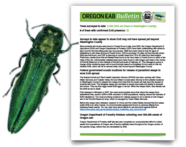 |
|
|
IRA Funding
Find answers to your questions about funding opportunities for urban forestry
through the federal Inflation Reduction Act here.
|
|
Prevent Heat-related Illness
Heat-related deaths and illness are preventable, yet annually many people succumb to extreme heat. This website provides easily accessible resources for members of the public, local health departments and other organizations to assist ongoing help with outreach efforts to those most vulnerable to extreme heat events.
Heat Equity
Across America, extreme heat disproportionately impacts people of color and people in poverty. American Forests analyzed surface temperature data from thousands of satellite images nationwide. Check out this data short to learn more (3-minute read).
Trees & Human Health
Find case studies, research libraries, the climate and health action guide, and the forest service’s comprehensive summary of how urban trees and greenspace improve human health and wellbeing all on the vibrant cities webpage.
Did you know about these programs from the Arbor Day Foundation? Know of a hospital or school in Oregon that would like to participate? Have them reach out to our program for support in the application process!
Tree Campus Healthcare & Tree Campus K-12
|
|
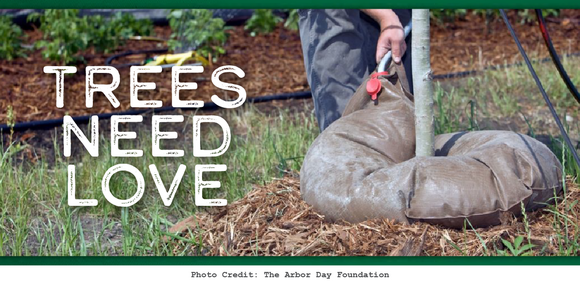 Care Tips from the Arbor Day Foundation
Pruning
Avoid heavy pruning in the summertime. This time of year, prune lightly only to remove dead/broken branches and other corrective pruning.
Watering
Watering is a key part of tree care, but it is difficult to recommend an exact amount of water due to the variety of environmental conditions and species’ drought tolerances. Here are a few guidelines to help you water your trees properly this summer. It is important to note that while it is especially important to water newly planted trees, during periods of drought you may also need to water mature trees to help them through the hot and dry weather. Check soil moisture levels and weather regularly to help you decide when to water.
Watering Trees During First Two Years: During the first two or three growing seasons, your newly planted tree is expending a lot of energy trying to get its roots established in the soil. Especially during the first few summers of your new tree’s life, it will have a difficult time dealing with heat and drought. You can make this easier by providing water and covering the soil with wood-chip mulch. Deep watering can help speed the root establishment. Deep watering means keeping the soil moist to a depth that includes all the roots.
How Much Water and When: Not enough water is harmful for the tree, but too much water is bad as well. Over-watering is a common tree care mistake. Please note that moist is different than soggy, and you can judge this by feel. A damp soil that dries for a short period will allow adequate oxygen to permeate the soil. You can check soil moisture by using a garden trowel and inserting it into the ground to a depth of 2”, and then move the blade of the trowel back and forth to create a small narrow trench. Then use your finger to touch the soil. If it is moist to the touch, then they do not need water.
Mulching
Mulching around young trees in the summertime insulates the soil, providing a buffer from the heat. It also increases water retention, suppresses competition from weeds, and prevents soil compaction and lawn mower damage. Make sure mulch is not applied directly to the tree’s trunk.
Additional Summer Tree Care Reading:
|
|
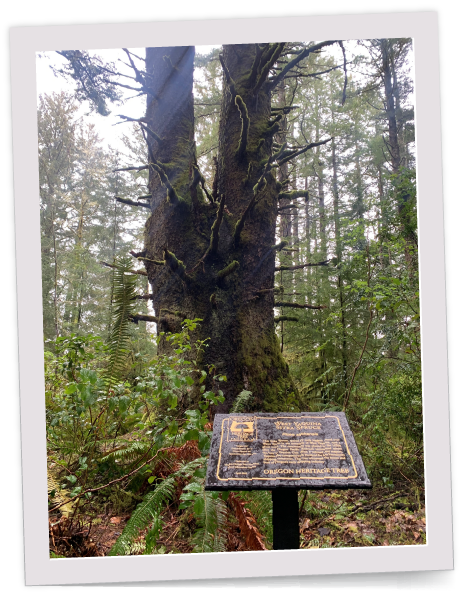 |
|
Oregon Heritage Tree dedicated at Yakona Nature Preserve
The Travel Information Council and its volunteer Oregon Heritage Tree Committee inducted the West Yaquina Sitka spruce into the Oregon Heritage Tree program on Friday, April 21, with staff and supporters of the Yakona Nature Preserve & Learning Center in South Beach.
The West Yaquina Sitka spruce, scientific name Picea sitchensis, is the 82nd Oregon Heritage Tree, a designation that recognizes trees with statewide or national significance. The tree is 22.4 feet in circumference, 158 feet tall, with an approximate crown spread of 90 feet. It is estimated to be 200 years old.
Read the full article here.
Photo Credit: Yakona Nature Preserve
|
|
|
Lake Oswego Resident Earns Honors from Oregon Community Trees
LAKE OSWEGO, Ore. – Lake Oswego resident Terrence Flanagan is the 2023 recipient of Oregon Community Trees’ (OCT) highest annual honor - its President’s Award. OCT is recognizing Flanagan for his more than four decades of exceptional contributions and achievements in urban and community forestry in Oregon and the world.
|
|
 |
In selecting Flanagan for the Award, OCT President Mike Oxendine emphasized his pivotal role, saying, "I feel like I run into Terry at every arboriculture or urban forestry event I attend, and he is always helping, volunteering, or sponsoring the event. Terry is a crucial leader in Oregon's urban forestry and arboriculture fields, and we are lucky to have his support and passion. His dedication is leaving an enduring impact on the profession.” Read the full story here.
|
|
Oregon Communities hold Ceremonies
for their Peace Trees
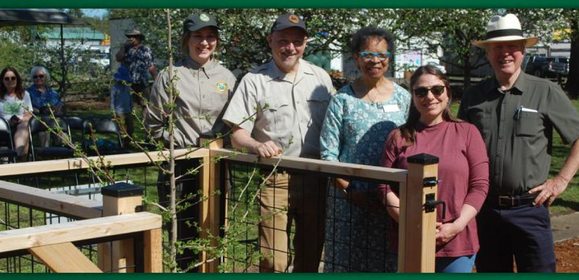
|
|
How Hiroshima Peace Trees came to Oregon
To mark the 75th anniversary of the close of World War II, people in three dozen communities around Oregon committed to plant about 53 special peace trees starting in 2019. The young trees were grown in Ashland by Mike Oxendine from seeds of trees that miraculously survived the atom bombing of Hiroshima on Aug. 6, 1945. Today, Oregon has one of the largest collections of Hiroshima peace trees of any state or nation outside Japan. Read the full story here.
Ceremonies took place most recently for peace trees in Ashland and Oregon City. Former Oregon Poet Laureate Kim Stafford attended the Oregon City Ceremony and wrote this poem (at right) for the tree.
Read the full articles about the ceremonies here:
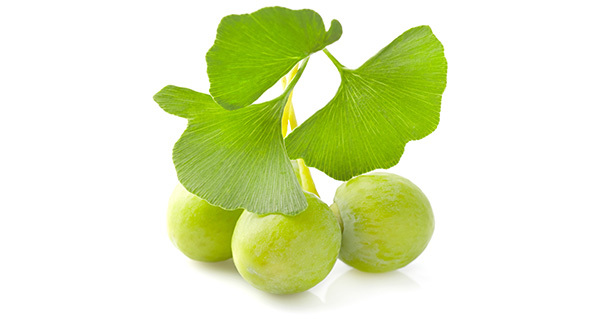
|
Peace Tree
My calling is to rise. My purpose is to reach. Where buildings fall, I stand silent in the shouting. Even in billowing dust, I begin the next peace. If you splinter me, I will heal. After the battle, I will silhouette dawn. I have seen seasons pass, the rising of anger, fury of the storm, return of calm. I’m still yearning for the sun, still delving into dark. Rooted patriot of Earth, I drink the sky to give you breath.
Neutral in war, I shade both sides. Send my seeds across the border, I will be your diplomat of green. If you plant me beside the graves of soldiers, to their mothers I will say with my leaves what they might have said in the wind that stirs.
- Kim Stafford
|
|
OCT Corner - Urban Forestry Conference
The Urban Forestry Conference, “What’s Bugging our Trees” took place on June 1st at the World Forestry Center in Portland, OR this year. Unable to attend? Look for a recording of the event coming soon to the ODF webpage.
|
|
Upcoming Events
Interested in a workshop about Urban Forestry Planning, Municipal Tree Code Drafting, Tree Identification, and Inventory collection, EAB, or another topic we have not thought of yet? We want to know! Send Brittany an email with the subject ‘Urban Forestry Workshop Request.’
|
|
Contact Us
Brittany Oxford
Community Assistance Forester
971.375.6346
Email
Scott Altenhoff
Urban and Community Forestry Program Manager
971.428.7380
Email
|
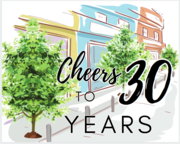 ODF's Urban and Community Forestry Assistance Program celebrated 30 years of service in 2021!
|
|
About the Community Tree Connections Newsletter
Community Tree Connections (CTC) is a periodic publication by the Oregon Department of Forestry, Urban and Community Forestry Assistance Program. Our mission is to help Oregonians improve their quality of life by promoting community investment in our urban forests. CTC is published in cooperation with the USDA Forest Service. The USDA is an equal opportunity provider and employer. Subscriptions to Community Tree Connections are free. Sign up to receive the newsletter.
|
|
|
|
|